Series Editors’ Foreword
Preface
Contents
1 Introduction
References
2 Control and Modeling of Microgrids
2.1 Control of AC Microgrids
2.1.1 Control Objectives in AC Microgrids
2.1.2 Primary Control Techniques in AC Microgrids
2.1.3 Secondary Control
2.1.4 Tertiary Control
2.2 Dynamic Modeling of AC Microgrids
2.2.1 Voltage-Controlled Voltage Source Inverters
2.2.2 Current-Controlled Voltage Source Inverters
2.3 Control of DC Microgrids
2.3.1 Control Objectives
2.3.2 Standard Control Technique
References
3 Introduction to Multi-agent Cooperative Control
3.1 Synchronization in Nature, Social Systems, and Coupled Oscillators
3.1.1 Synchronization in Animal Motion in Collective Groups
3.1.1.1 Distributed Local Neighborhood Protocols for Synchronization
Reynolds’ Rules [9]
3.1.2 Leadership in Animal Groups on the Move
3.1.3 Synchronization in Coupled Oscillators and Electric Power Systems
3.2 Communication Graphs for Interconnected Systems
3.2.1 Graph Matrices–Algebraic Graph Theory
3.3 Cooperative Control of Multi-agent Systems on Communication Graphs
3.3.1 Consensus and the Cooperative Regulator Problem
3.3.2 Synchronization and the Cooperative Tracker Problem
3.3.3 More General Agent Dynamics and Vector States
3.3.3.1 Vector States
3.3.3.2 General State Variable Agent Dynamics
3.4 Time-Varying Edge Weights and Switched Graphs
References
4 Distributed Control of AC Microgrids
4.1 Distributed Secondary Frequency Control
4.2 Distributed Secondary Frequency and Power Control
4.2.1 Distributed Cooperative Control Protocol for Frequency and Active Power Sharing
4.2.2 Case Studies
4.3 Distributed Secondary Voltage Control of AC Microgrids
4.3.1 Secondary Voltage Control Objectives
4.3.2 Distributed Secondary Voltage Control Using Feedback Linearization
4.3.3 Case Studies
4.4 Distributed Secondary Voltage and Reactive Power Control of AC Microgrids
References
5 Multi-objective and Adaptive Distributed Control of AC Microgrids
5.1 Multi-objective and Two-Layer Control Framework for AC Microgrids
5.1.1 Control Layer 1: Frequency Control and Voltage Control of VCVSIs
5.1.2 Control Layer 2: Active and Reactive Power Controls of CCVSIs
5.1.3 Case Studies
5.2 Adaptive and Distributed Voltage Control for AC Microgrids
5.2.1 The Adaptive and Distributed Controller Design
5.2.2 Case Studies
6 Droop-Free Distributed Control of AC Microgrids
6.1 Droop-Free Cooperative Control Framework
6.1.1 Microgrid as a Cyber-Physical System
6.1.2 Cooperative Control Policy
6.1.3 Voltage Estimation Policy
6.2 System-Level Modeling
6.2.1 Distribution Network Model
6.2.2 Dynamic Model of the Control and Cyber Subsystems
6.2.3 Dynamic Model of the Entire Microgrid
6.2.4 Controller Design Guideline
6.2.5 Steady-State Performance Analysis
6.3 Experimental Verification
6.3.1 Performance Assessment
6.3.2 Communication Delay and Channel Bandwidth
6.3.3 Plug-and-Play Study
6.3.4 Failure Resiliency in Cyber Domain
6.4 Summary
Appendix
References
7 Cooperative Control for DC Microgrids
7.1 Distributed Cooperative Controller for DC Microgrids
7.1.1 Graphical Representation of DC Microgrids
7.1.2 Cooperative Secondary Control Framework
7.1.3 Voltage Observer
7.1.3.1 Dynamic Consensus Algorithm
7.1.3.2 Noise Cancelation Module
7.2 Analytical Model Development for DC Microgrids
7.2.1 Global Dynamic Model
7.2.2 Guidelines for Controller Design
7.2.3 Steady-State Analysis
7.3 Distributed Adaptive Droop Control for DC Microgrids: An Alternative Solution
7.4 Experimental Performance Evaluation
7.4.1 Design Procedure
7.4.2 Droop Controller Versus Cooperative Controller
7.4.3 Load Change Performance Assessment
7.4.4 Plug-and-Play Capability
7.4.5 Cyber-Link Failure Resiliency
7.5 Summary
Appendix
Dynamic Consensus
Analysis of the Noise Cancelation Module
Microgrid Parameters
References
8 Distributed Assistive Control of DC Microgrids
8.1 Introductory of Power Buffer and Distributed Control
8.1.1 Operational Principle of Power Buffer
8.1.2 Distributed Control
8.2 System-Level Modeling of DC Microgrid with Power Buffers
8.3 Multi-player Game for Optimal Control
8.3.1 Microgrid Loads as Players in a Differential Game
8.3.2 Policy Iteration to Solve the Coupled AREs
8.4 Case Studies
8.4.1 Impedance Adjustment by Tuning Buffer Voltage
8.4.2 Steady-State and Small-Signal Decomposition
8.4.3 Conventional Approach: Deactivated Power Buffers
8.4.4 Assistive Controller: Single Assisting Neighbor
8.4.5 Assistive Controller: Multiple Assisting Neighbors
8.4.6 Communication Delay and Channel Bandwidth
8.5 Summary
Appendix
Power System Parameters
Control Parameters
References
Index
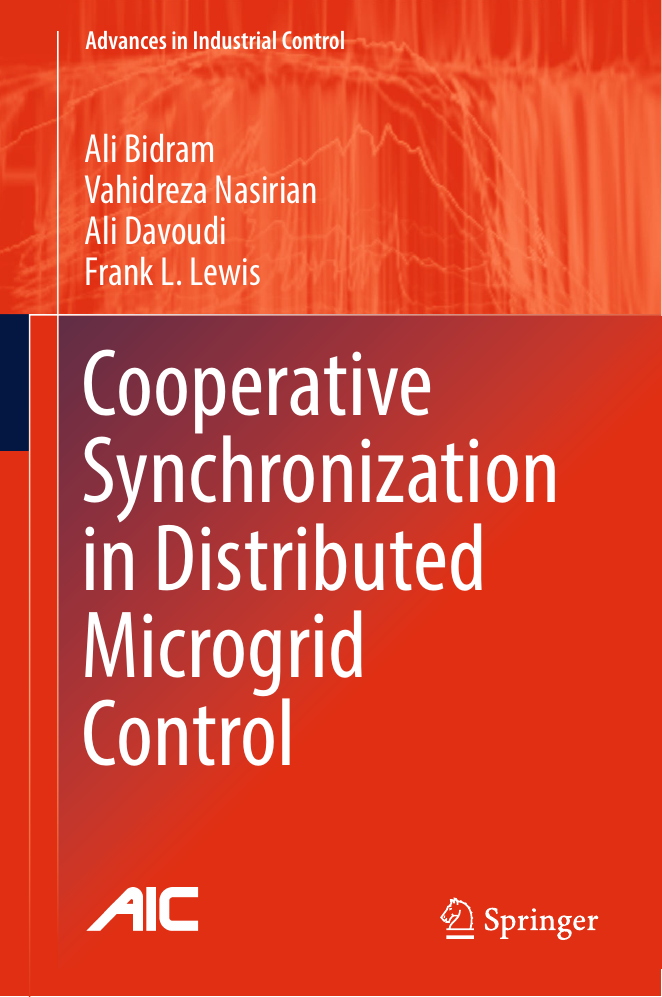


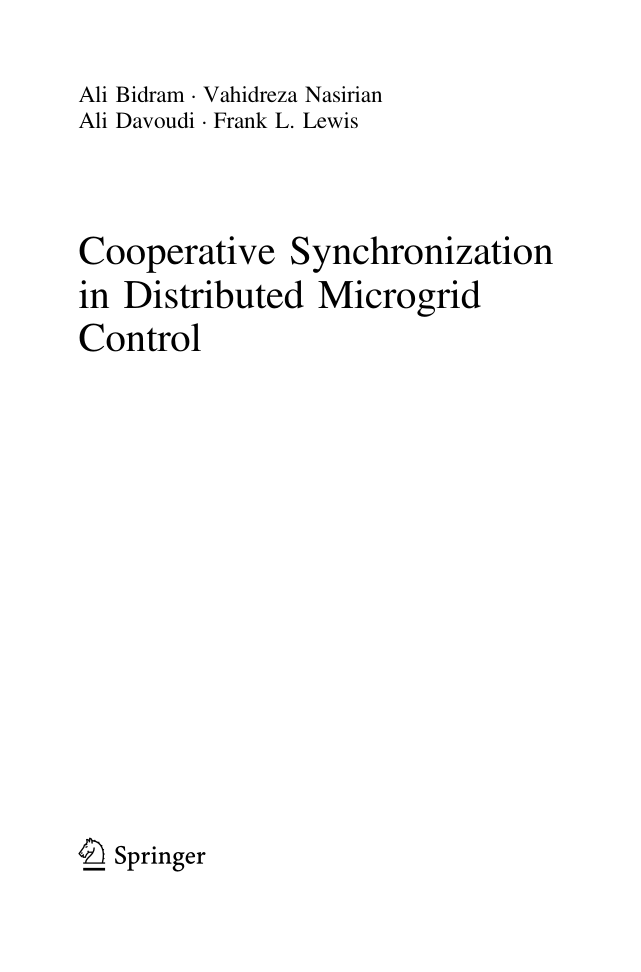
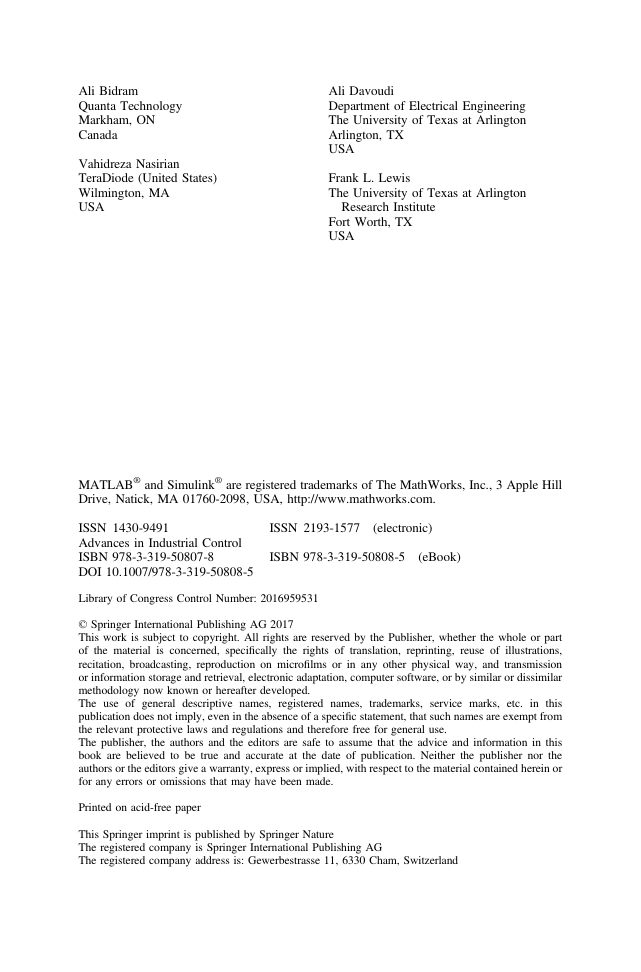

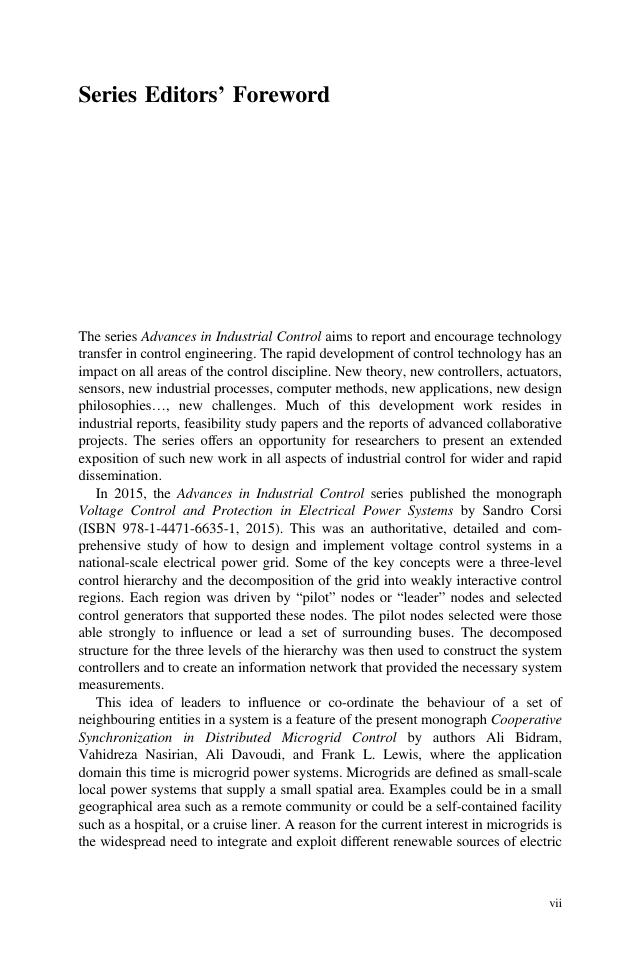
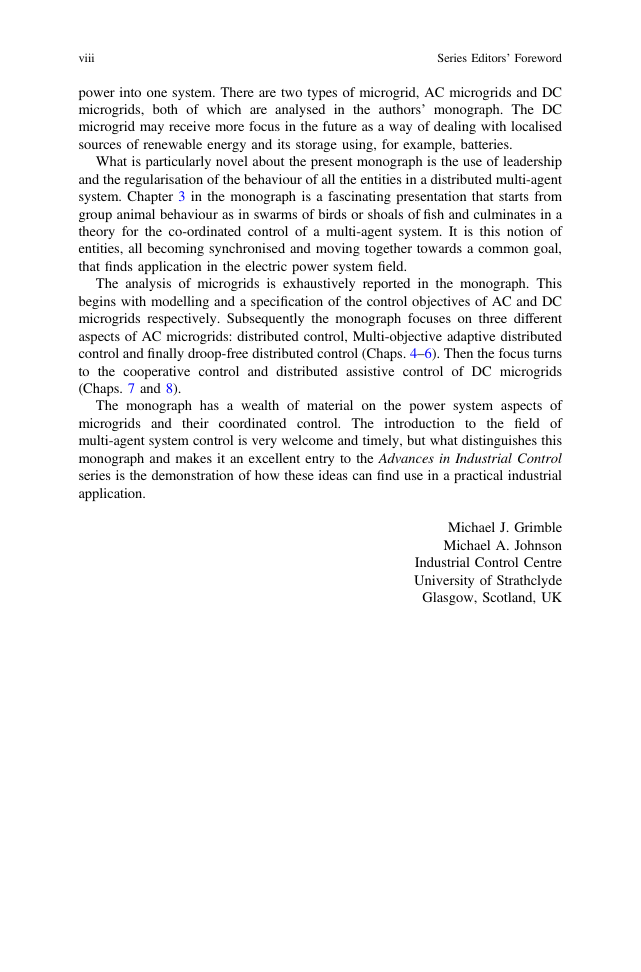








 2023年江西萍乡中考道德与法治真题及答案.doc
2023年江西萍乡中考道德与法治真题及答案.doc 2012年重庆南川中考生物真题及答案.doc
2012年重庆南川中考生物真题及答案.doc 2013年江西师范大学地理学综合及文艺理论基础考研真题.doc
2013年江西师范大学地理学综合及文艺理论基础考研真题.doc 2020年四川甘孜小升初语文真题及答案I卷.doc
2020年四川甘孜小升初语文真题及答案I卷.doc 2020年注册岩土工程师专业基础考试真题及答案.doc
2020年注册岩土工程师专业基础考试真题及答案.doc 2023-2024学年福建省厦门市九年级上学期数学月考试题及答案.doc
2023-2024学年福建省厦门市九年级上学期数学月考试题及答案.doc 2021-2022学年辽宁省沈阳市大东区九年级上学期语文期末试题及答案.doc
2021-2022学年辽宁省沈阳市大东区九年级上学期语文期末试题及答案.doc 2022-2023学年北京东城区初三第一学期物理期末试卷及答案.doc
2022-2023学年北京东城区初三第一学期物理期末试卷及答案.doc 2018上半年江西教师资格初中地理学科知识与教学能力真题及答案.doc
2018上半年江西教师资格初中地理学科知识与教学能力真题及答案.doc 2012年河北国家公务员申论考试真题及答案-省级.doc
2012年河北国家公务员申论考试真题及答案-省级.doc 2020-2021学年江苏省扬州市江都区邵樊片九年级上学期数学第一次质量检测试题及答案.doc
2020-2021学年江苏省扬州市江都区邵樊片九年级上学期数学第一次质量检测试题及答案.doc 2022下半年黑龙江教师资格证中学综合素质真题及答案.doc
2022下半年黑龙江教师资格证中学综合素质真题及答案.doc